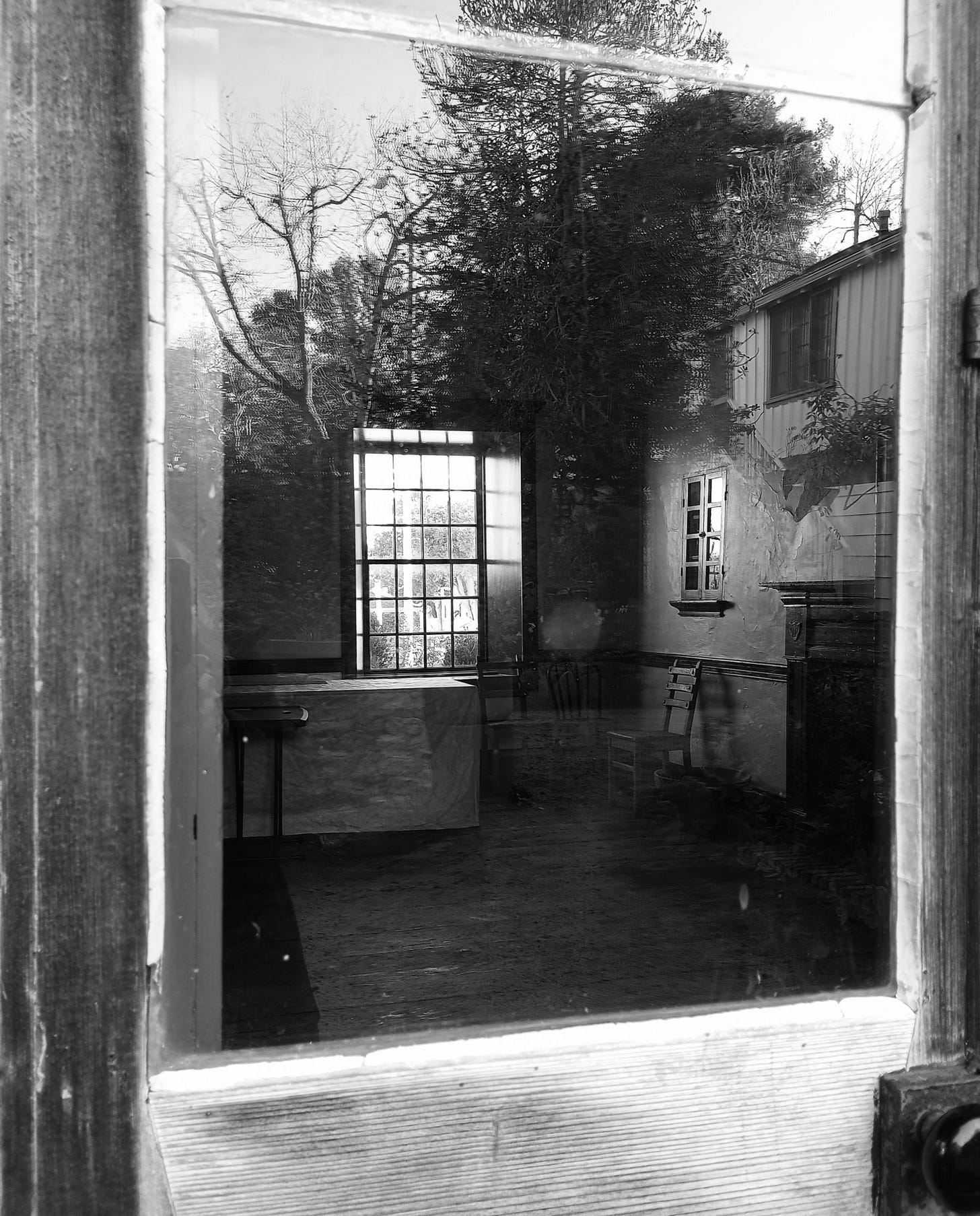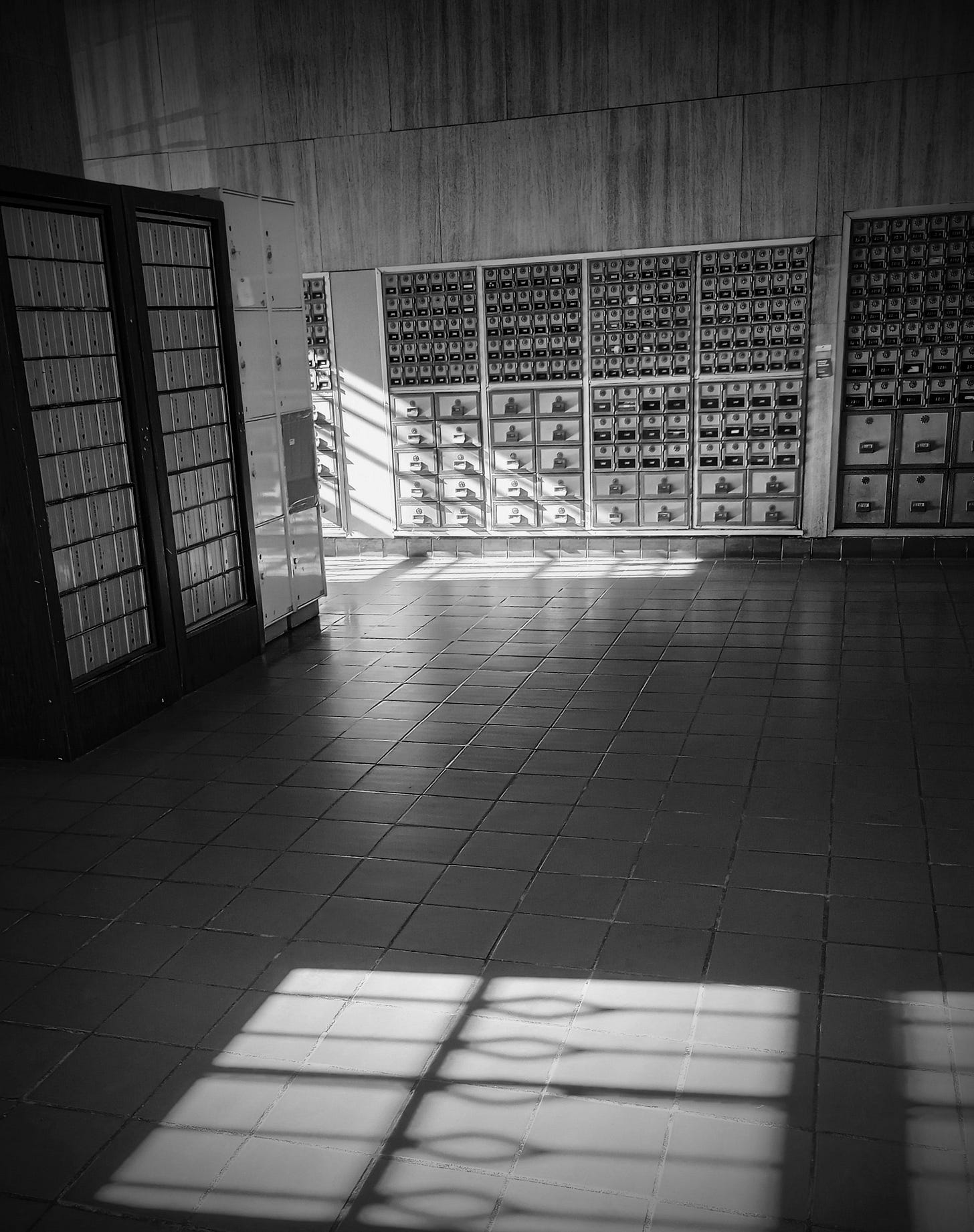Seen and Unseen
#147: Substackers, Perec, Mieville, Garrett, Chung/Tsang, Green, Lorca, Tahimik, Maddox, Autodesk, Reynolds, Sánchez-Tello, Dept. of Homeland Inspiration, Fog-chaser, and Lopez.
HERE & NOW
If you’re wondering what happened to my Saturday issue, I’ve been working on a final draft of a grant report while dealing with some other work responsibilities, so I had to put the issue on hold until today.
SUBSTACKERS
Lately, I’ve taken a little more time to explore Substack as a community. I see that, aside from the newsletters, it’s a busy social media space all its own, used mostly by people who may be into art, music, politics, tech, history, or whatever—but the one thing they have in common is the need to curate and write. And I often find myself inspired and captivated by what they have to say. So if you have a little time, check out the posts on Substack social media. Here’s a small list of my latest Substack recommendations:
Monterey Neighbors & Friends, Susie Bright’s Journal, Duane Toops, Forgotten Poets, Deepa Paul, Lindalay, Department of Homeland Inspiration, Fog Chaser, Anarchy Unfolds, Oldster, Barry Lee Art, TheSneakyArt Post
SPACES SEEN & UNSEEN
Consider the parameters of your personal journey. To what extent—whether a little or a lot—have you strayed from patterns set before you? Have you considered how a neighborhood is laid out to guide you—even condition you—to follow certain routes, but not others? What if you looked differently at your surroundings—at those things made “invisible” or taken for granted? What if you looked for light in the most mundane patch of weeds, the odd path cutting across the gully, the way a type font or alphabet becomes part of your everyday language or disappears as if drowned?
As someone who lost his family to the Nazi concentration camps, experimental artist/writer, linguistic gamer, and Oulipean1 Georges Perec was particularly interested in the aesthetics, constraints, and uses of space.2
Finding your own path to creative freedom may be about breaking the rules, but it can also be about rule-bending or subverting rules to your own purposes.
For Perec the problem with utopian aesthetics was that ‘there is always some great taxonomic design: a place for each thing and each thing in its place.’ Too many boxes and straight lines.—Ken Worpole on Georges Perec, “Avoid a Void: Homage to Georges Perec’s Species of Spaces.”
I’ve only just begun reading Species of Spaces; so far the experience is like watching an artist explore—and question— every nook, alley, and corner of life in the city, including how one moves through and inhabits spaces as mundane as a bedroom or apartment. He seems to be writing the city as he goes. Here it is online: Species of Spaces and Other Pieces (from Monoskop.org).
Speaking of cities, I recently watched and enjoyed the BBC TV series, The City and the City, adapted from author China Mieville’s police procedural novel of the same title. It follows the uncomfortable journey of a detective who has been mentally conditioned to unsee the teeming city that exists physically within the space of his own city. But a murder he’s investigating forces him to “see” and then venture beyond the imposed border. Next, I will read the novel.
Now go out for a walk. Bring your camera or a notebook and pen. . .
RABBIT HOLE
Bradley Garrett on “urban exploring“ and the value of the trespass:
Joel Chung dedicates himself to recovering the lost art of his mentor, mid-century graffiti calligrapher and “outsider” artist Tsang Tsou-choi:
Robert Green recovers a lost typeface from the river Thames (ThisisColossal.com).
Dawn
Dawn in New York has
four columns of mire
and a hurricane of black pigeons
splashing in the putrid waters.
Dawn in New York groans
on enormous fire escapes
searching between the angles
for spikenards of drafted anguish.
Dawn arrives and no one receives it in his mouth
because morning and hope are impossible there:
sometimes the furious swarming coins
penetrate like drills and devour abandoned children.
Those who go out early know in their bones
there will be no paradise or loves that bloom and die:
they know they will be mired in numbers and laws,
in mindless games, in fruitless labors.
The light is buried under chains and noises
in the impudent challenge of rootless science.
And crowds stagger sleeplessly through the boroughs
as if they had just escaped a shipwreck of blood.
—Federico Garcia Lorca3
I was introduced to the word Duende through the poetry of Federico Garcia Lorca, who wrote “the duende is a force not a labour, a struggle not a thought. I heard an old maestro of the guitar say: ‘The duende is not in the throat: the duende surges up, inside, from the soles of the feet.’ Meaning, it’s not a question of skill, but of a style that’s truly alive: meaning, it’s in the veins: meaning, it’s of the most ancient culture of immediate creation.”4 Now I come to the same term through Kidlat Tahimik, who adds to this a sense of going beyond your conditioned social framing to surrender to your own unique voice. If you don’t understand Filipino, turn on closed caption (cc), which captures some of the translation, but for the rest open your ears and mind and you’ll get what he’s saying.5
In Lakaran ni Kabunyan, Tahimik’s son Kabunyan de Guia journeys from the northern Philippines (Baguio) to the south (Davao, Mindanao), meeting up with various mentors in his search for Liwanag (light or illumination). Eventually his father and children become involved. “An odyssey, Tahimik shows, does not conclude with one adventurer but continues for generations.”6
Have you ever considered making a tiny book? It’s so easy. MakerMaddox shows you, his “fam,” how to make an easy, cut-and-fold “ox-plough“ (or “snake”) book, no glue or sewing required. However, being Filipino, I consider this to be a “carabao horn” or “naga” (or bakunawa) book. Another thing I like about Maddox is that he reuses materials, like cardboard packaging. Also, too many Youtube makers are so dang serious; this guy makes me laugh:
A book needs a cover! If you’d like to make a simple origami cover for your little book, here are instructions from Autodesk instructables with video:
This article is a re-run from 2023, but I think it works here: Road Atlas: Women Healing Trauma in the Nomad West. By Julie Reynolds in Voices of Monterey Bay. And while you’re at it, read their latest article, “Money has run out for fruits and vegetables for low-income Californians. Elected leaders are silent,” by George B. Sánchez-Tello.
SOUNDINGS
Music and Art as Healing from the Department of Homeland Inspiration podcast with curator/artists and musicians Angelica Muro, Jeffrey Jones, and Lanier Sammons. But first, she reports on some sad news about the Art Programs and Gallery at CSUMB. The discussion about music, healing, and the Covid pandemic started me thinking about my own need for healing from the Pandemic experience, and also about the myth of the Bakunawa (serpent who ate the moon) and how ancient Filipinos dealt with the fear of eclipses through sound.
Fog Chaser’s Exploration No. 5 (March 13, 2024), Mt. Hood, Oregon:
Dianna Lopez getting you to finally relax:
Thanks for reading Eulipion Outpost! Special thanks to readers who have donated here on Substack or in my Ko-fi page to support my efforts!
My Links List is now on an old-school Neocities site that I built.
Eulipion Outpost is a reader-supported publication. To receive new posts and support my work, consider becoming a free or paid subscriber.
Thanks to local historian Sheila Lee Prader for bringing my attention to Perec’s book.
From Allpoetry.com
From “Theory and Play of the Duende” by Federico Garcia Lorca (https://jazzdagama.com)
In the Philippines, duwende is also popularly known as an imp or spirit who can bestow powers or cause mischief.








Thanks for the recommendations!